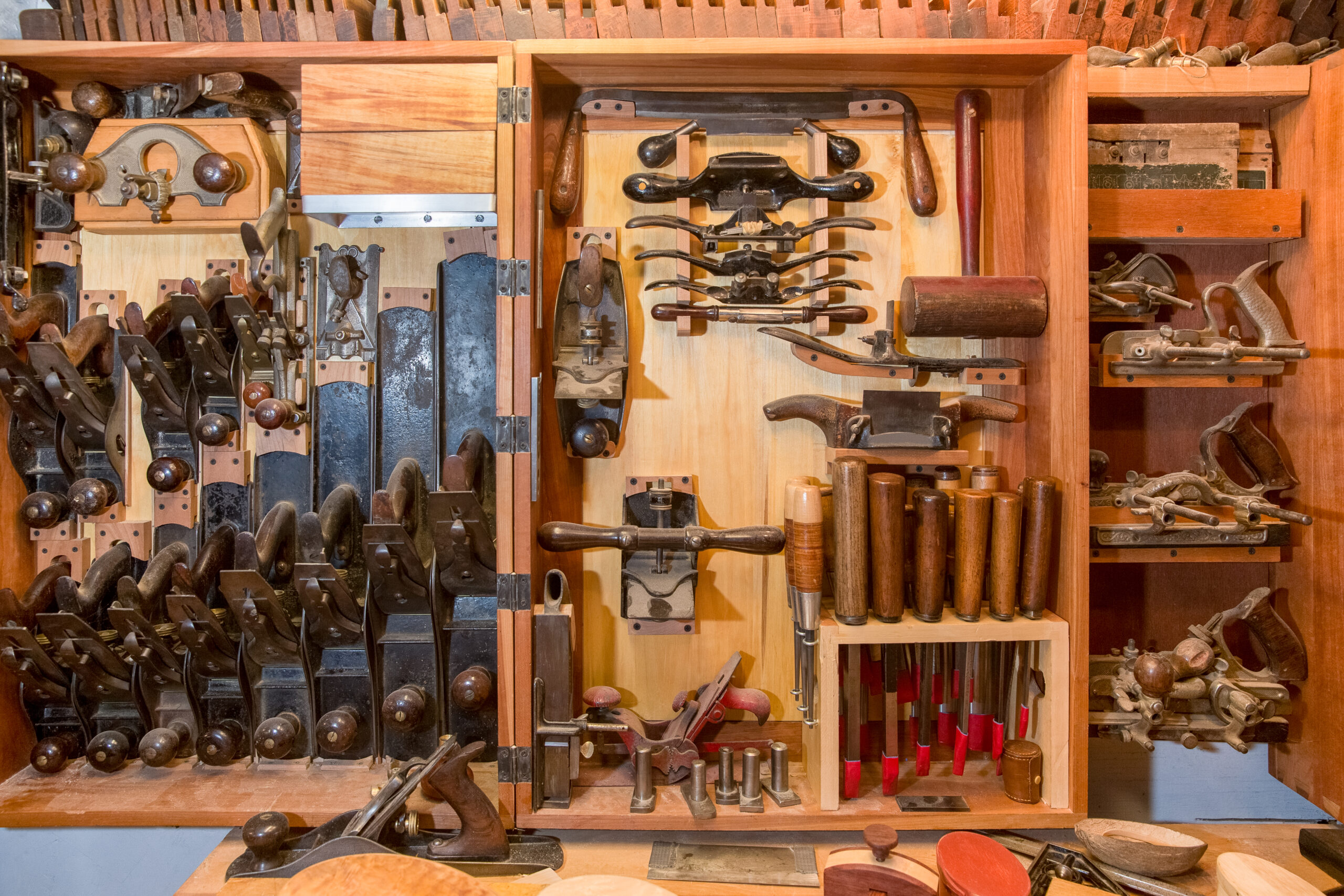The Weekly Feast – Steamed Brown Bread
If you live in or near New England, you may know of the very Northern experience of canned brown bread. Cylindrical and sweeter than regular bread, more dense, and yet so delicious when camping! Canned bread has a long history in New England, and is deeply entrenched in our culture (The Takeout). The reality is that canning only made this steamed version of bread more easy to disseminate to the public. It had long been part of the New England colonists’ food culture. So here is a recipe based firmly on the 1908 version of The Rumford Complete Cook Book.
Ingredients:
- 2 cups whole wheat or Golden Wheat flour
- 1 cup yellow cornmeal
- 2 tsp baking powder
- 1/2 tsp salt
- 1/2 cup molasses
- 1/2 cup raisins
- 1 egg
- 2 cups whole milk
Sift together the flour, cornmeal, salt, and baking powder. Add in the raisins and molasses. Whisk together the egg and milk, then add that to the flour mixture.
Have ready several well greased tins with oven-safe lids, and fill these 2/3 full of the batter. Grease the lids and fit them onto the tins. If you don’t have appropriate tins, you can use #3 (large bean) cans or even coffee cans (which are generally #10). For can sizing, you can check out this site.
There are two methods you can use for steaming your bread: stovetop or oven.
To steam your bread on the stovetop, you need a pot that is sufficiently larger than your can that you can put a lid on the pot. Put a steamer rack (a metal trivet, even balled up aluminum foil will work) in the bottom of the pot, and put your can on top of your rack. Add enough boiling water (yes, boil it before you put it in the pot with your bread) to come about a third of the way up the side of your can. Cover the pot and turn the heat to its lowest setting that will still maintain a simmer to generate steam. Steam the bread for three hours.
To steam your bread in the oven, pre-heat your oven to 325°F. Find a high sided roasting or other pan that will hold your can of bread and still allow you to pour in enough boiling water to reach a third of the way up the side of the can. Again, steam the bread for three hours.
You can check your bread for doneness by inserting a toothpick. If it comes out clean, it’s ready. I would suggest you start checking your bread at the 2 hour mark, especially if you’re using smaller cans. Continue to steam until the bread is baked through. Let your steamed bread cool on a cookie rack on the counter for at least one hour before removing it from the can. It should slide out fairly easily after it has cooled.
Serve this up as is, or “toast” it in a frying pan with a little bit of butter or margarine. This is very dense, very filling bread, and is in NO WAY a reduced calorie item.
Redistricting
Representatives are allocated by population. The higher the state’s population, the more representatives they have.
The total number of representatives has been fixed for a while. This means that if one state gets more representatives, some other state gets fewer.
Not only do representatives determine the make up of the House, they also determine the make up of the electorial collage.
Thus, the number of representatives a state has is critical in determining political outcomes.
One of the issues currently being debated is a new census before the 2028 election. There are indications that some states, such as California, are overrepresented because the census counted criminal illegal aliens. Look into the 3/5s clause in the Constitution for why this is an issue.
After every census, the states can redistrict based on the new census numbers.
In 1965, Congress passed the Voting Rights Act of 1965. This act sets new rules for how the representatives should be chosen by the many states.
Unfortunately, this act is likely at odds with the Constitution. In particular the Fourteenth Amendment. Any law that Congress passes that is contrary to the Constitution is void. Unfortunately, it takes a case reaching the Supreme Court and the Supreme Court agreeing the law is contrary to the Constitution for the law to be struck down.
Of course, this hasn’t stopped rogue, agenda-driven, inferior court judges from pretending that Congress can pass laws restricting the powers of the Article II executive.
The question then becomes, “How do you create districts for a state that are representative of the people of the state?”
Generally the districts of a state are created to control the outcome of elections.
Here is part of the 2011 congressional districts of Maryland:

If you look at Congressional District 01 in orange, you can see that it has many counties within it. But more importantly, it extends into Baltimore County. The same with District 02. Most of the military of the Aberdeen Proving Grounds and Edgewood Area are in District 02. But I also include a part of Baltimore City and Howard County.
I’m sure you would not be surprised to learn that the very high concentration of PoC voting Democrat causes Districts 01 and 02 to be Democrat districts.
The current congressional districts follow the county borders.
The way this worked was that everybody knows that Baltimore is a huge Democrat stronghold. It is so huge that they can dilute it with Republicans and still come out for the Democrats.
By using the Democrat voters of Baltimore in districts 1, 2, 3, and 7 they made 4 of the 8 districts +Democrat. District 4 is using the Democrat voters of Montgomery County to overwhelm the Republican voters of the rest of the district. Districts 5, 6, and 8 are Democrat strongholds; they don’t need any help from the city.
This districting leaves Republicans of Maryland without representation in Congress.
In Louisiana v. Callais the Supreme Court is hearing a case challenging the VRA on Constitutional grounds.
In Robinson v. Ardoin in 2023, a district court found that Louisiana had violated the Voting Rights Act of 1965. The inferior court ordered the state to create an additional majority-black district to avoid “vote dilution.”
This court order resulted in Louisiana’s SB8. The sponsor of SB8 said “We all know why we’re here. We were ordered to draw a new Black district, and that’s what I’ve done”.
That new district stretches 250 miles from the Shreveport in the northwest to Baton Rouge in southeast Lousiiana.
All to create another black district. When we say black district, what is really meant is “Democrat district.”
Well the Supreme Court got the case and decided to punt. Thomas was unhappy with that and told the world how unhappy he was.
This case was argued on March 24th in the 2024 term. Instead of issuing an opinion before the end of the term, the Court instead put the case back on the calendar for reargument.
It appears that the Court wants to be briefed on specific aspects of the case.
Conclusion
This case is outside my knowledge base. In trying to understand the question presented, I’m lost. And that is just one page. Thank goodness Thomas writes in English that I can understand.
This is just another case clawing back the rights of The People after years of reverse descrimination.
A Simple Box
Last week’s project was to make a shooting board.
I had all the stock prepared and had started assembling it when I realized that the screws were too long. They poked out into the part my plane slides down.
This is not good. The project is on hold until I receive more screws.
A Joiner’s Box
This is a simple box to hold my tools. It is about 38″ wide, 15″ deep, and 13″ tall. I think. The design calls for a simple till, an internal box for small parts. I think I will do the more period-correct and have two sliding trays the length of the box.
I brought in my first glued-up panel for my wife to fuss over and tell me nice things. Ego stroking for sure.
She came clean and told me that it was just a board to her, not really worthy of praise.
This led me to think about that simple panel.
To get to the point where I could make that panel, I needed to build my workbench. This was a big build; it is done.
I needed work holding for the bench. I installed a leg vise and drilled holes for hold-downs. I made a batten to hold boards in place as they are planed. This was more than a bit of work.
The first step of making a panel is to be able to cut it to size. My skills at handsawing have gotten good enough that this is no longer an issue for right-angle cuts. It is fast enough that I’m not interested in using a power tool.
Next, the stock needs to be planed smooth and flat. My smoothing plane made short work of the smoothing, and my jack plane got the boards flat. I was able to quickly check for twist and flatness with my winding sticks and a straight edge.
The first board I attempted to smooth and flatten took me hours, and I did a poor job. Today it went quickly, with low effort.
That is because I’ve spent far too many hours sharpening plane irons and chisels. My slow-speed grinder now puts a 26-27° bevel on an iron or chisel; the three stones then bring that to 25°, and the strop polishes the bevel to a mirror-like finish. It is to the point where I only need to use the fine, extra-fine, and strop to bring an edge back to razor sharpness.
You can hear and feel when the blade is sharp. If I would only put the time into sharpening the irons of all the planes every day before starting, my life would actually be better and easier.
Even with a sharp iron, you need to know how to adjust the plane. Before I started this journey, I didn’t know how to do that. My planes fought me constantly. Now they are a pleasure to use.
Besides knowing how to tune, sharpen, and adjust your planes, you need to know how to use them. It is to the point where the process of smoothing and flattening a piece of stock is easy. I start with the #4, make it smooth, and move to the #5 Jack plane for the flat. Using the Jack plane at an angle to present a shearing action also makes the boards flat from side to side.
It only takes 5 to 10 minutes to make a board smooth and flat.
The next part of stock prep is to square an edge. Again I start with the #4, knock down the high spots until I have a smooth edge from end to end, and then I switch to the #5 again.
Checking for squareness is easy but humbling. Except that more and more often the edge is square after the Jack plane.
I’ve been playing with the Jointer plane. It is a huge, heavy, and long plane. The iron is wide enough to cover 2+ inches of wood in a single pass.
For my first panel, I clamped the finished faces together with the squared edges aligned with each other. Less than 4 minutes in the vise with the Jack and Jointer, and the edges are jointed.
The glue-up went very smoothly. There was a very thin bead of glue that came out of the glueline, as wanted. The final product is pretty darn good for my first glue-up in many years.
After the glue had dried for a few hours, I took the clamps off and gave it the once-over. It is not flat enough to plane the finished surface, so I worked on the back surface.
I think that this will be the last panel that I glue up that is full thickness. From now on, I’ll either rough plane the back surface or feed it through the (cheating) bandsaw to take 3/16 off the back face to reduce the amount of chips I make.
So that very unimpressive 12×13 panel represents an entire series of new skills. I’m looking forward to doing still more.
SCOTUS: 2025 Term
First, a huge shoutout to CourtListener.com. These guys are doing an impressive job of exposing the inner workings of the legal system.
They haven’t hit the state-level courts yet, but at the federal level, they really can’t be beat.
They are a part of the Free Law Project. FLP has managed to get contracts and access to many court filings. They have created software to scrub court filings and collect them in one place. They have created a good search engine that just works.
Recently they announced a new feature: voice-to-text transcription of circuit court oral arguments.
In general, it is much faster for me to read a transcript than to listen to it. Plus, knowing who is speaking makes a difference in understanding what is happening.
With this new feature, I expect to be paying more attention to oral arguments at the appellate level.
I am biased towards them; I contributed a small bit of coding a while ago. They have just gotten better since I found them.
Supreme Court Terms
The Supreme Court term runs from July 1st to July 1st. The old term ends on June 30th, and the new term starts on July 1st with the court starting business in October.
In practical terms, this means that the case numbers change on July 1st. We are now seeing cases with a “25-” prefix, indicating the case was filed in the 2025 term. We won’t see anything really happen until October.
During a term, motions are filed on the docket and the emergency docket. These motions request certain actions of the court. The one we are most familiar with is a motion for a writ of certiorari.
Normally these are filed on the main docket. If a stay or injunction is requested, that will normally be done through the emergency docket.
Occasionally a motion for a stay or injunction will turn into a motion for a writ of certiorari.
Over the course of the term, the Court will hear oral arguments on 60 to 70 cases. These cases encompass all areas of law. Constitutional issues, business law, property law, criminal law, and all the other areas that I don’t know anything about.
The case that overturned Chevron was an administrative case. It just happened to be incredibly important to dismantling the administrative state.
Because of the breadth of types of cases, SCOTUS does not like to take on repetitive cases nor too many cases in the same area. They would rather pick one to three cases that address issues significant to the Nation.
We can expect two or three Second Amendment cases to be heard in a term. The cases chosen will address large issues that advance jurisprudence in Second Amendment law.
Will there be an assault weapons ban case? At this point, I believe the court has indicated that it will not. The refusal to grant cert to Snope (Bianchi) is a strong indicator.
Snope has been an ongoing case since 2017. It was one of the cases looking for cert before cert was granted in Bruen.
The case was brought in the Fourth Circuit to get a favorable ruling to reverse Kolbe v. Hogan.
Bianchi made it to the Supreme Court. Was granted cert after Bruen. The opinion of the Fourth Circuit Court was vacated. The case was remanded to the Fourth Circuit for a “do-over” in light of Bruen.
Two years later, the en banc Fourth Circuit decided they had gotten it right the first time around.
A motion for cert was made to the Supreme Court. That motion was denied.
Why Didn’t The Supreme Court Take These Second Amendment Cases?
Because they are a do-over.
Bruen was a licensing case. The question asked was does the Second Amendment-protected right to keep and bear arms extend outside the home? The resounding answer was “YES!” The right to keep and bear arms does exist outside the home. All states are now must-issue states.
The rest of the opinion is dicta. In that dicta, the Court explained how to evaluate Second Amendment challenges. They stated that when there is a constitutional challenge, the first step is to determine if the plain text is implicated. If the plain text is implicated, then it becomes the government’s burden to prove a history and tradition of that type of regulation.
Note, this is for all constitutional challenges. This is the basis of originalism in jurisprudence.
Because the question asked had to do with the right to keep and bear arms outside the home, it was not a repeat of Heller. The Heller methodology was and always has been: is the plain text of the Second Amendment implicated? If yes, then the burden shifts to the government to prove a historical tradition of matching firearms regulations.
Bruen did not change that in the least. It affirmed the Heller methodology.
Heller‘s dicta talks about how to find matching historical firearm regulations. It also discusses every word of the operative clause of the Second Amendment and why the operative clause is controlling and not “well regulated militia.”
In their research into the historical laws of this Nation, the Supreme Court could not find any regulations banning firearms that were in common use. Because there are no matching regulations, there is no history nor tradition of banning firearms in common use, such as the pistols at issue in Heller.
The opinion held that the Second Amendment protects an individual right to keep and bear arms. The specific question allowed the gun-grabbers to limit that to “in the home”.
The gun haters then created a two-step shuffle where they would first decide on the level of scrutiny required to balance away any practical Second Amendment-protected rights in the anti-gun states.
Bruen extend those protections outside the home and explained that the two-step shuffle was not allowed.
So what is Snope? The question asked in Snope is can the state ban a firearm in common use?
This is the same as Heller. The observed fact that the lower courts are not applying Heller correctly does not make the case significant to The Court.
Misbehaving inferior courts can be slapped down via other means.
Types of Second Amendment Cases
I believe there are a few types of cases that are making their way up the court system that will interest The Court.
The first is “sensitive places.” While SCOTUS gave examples of “sensitive places” and examples of what were not “sensitive places”, the states have decided on their definition.
The state’s definition of sensitive place is any place they don’t want armed people.
The second type of case is a definition of “The People.” There have been several cases where 18-20 year-olds have challenged laws restricting their right to keep and bear arms. There is a clear circuit split.
This case would allow The Court to clarify that “The People” means all the people. They might choose to extend that definition to people under the age of 18 as well as legal residents of the United States.
The more important part of that decision will be the dicta. That is where The Court will, again, tell the inferior courts how to do it right.
Finally, I believe we are going to see a case on the NFA. It won’t address machine guns; it will address infringements when there is no justification.
Remember, the reason that you can’t buy a short-barreled rifle with a 4473 is because the federal government has to collect a tax on the transfer of that firearm.
All the requirements, extra background checks, fingerprinting, and chief law enforcement officer approval exist to make sure that you pay your transfer fee and that you can prove that you have paid, on demand.
And nobody is stopping you from buying a machine gun if you are willing to meet the requirements and pay your $200 tax. The closing of the NFA to new machine guns isn’t stopping you from buying existing (pre-1986) machine guns.
In a few years, we might see something challenging the right to acquire machine guns. Acquiring would include making them.
If it ever becomes possible to add new machine guns to the NFA, I can see a booming business for drill guide jigs.
Conclusion
There are big things coming from the Supreme Court in the Second Amendment area. I’m sure it will be good.
Prepping – Ren Faire Report, Second Weekend
I don’t have many pictures of last weekend, as I was busy as all get-out. I have a single shot of one of my pies, which I pre-made at home so I wouldn’t be so busy. The pies were great, but I was still too busy to do anything but be at the kitchen tent.

Saturday, we had a glorious day. Rumors are floating that we had over 6000 people in fair that day, which is pretty damn fine. I sold several books, which was nice. Tips were good, too. With a beautiful day, though, comes the heat. It’s vastly important to put on sunblock several times during the day, because it does wear off as you sweat and it’s vital. Even more important is drinking enough water and assorted other liquids to balance your electrolytes. Water alone won’t do it, because you’re working much harder than usual, sweating buckets (or worse, you stop sweating, which is downright dangerous), and not peeing nearly as often as you should. You can actually get water drunk (loopy from too much water) and still be dehydrated. As someone with VERY low sodium naturally, I always have Gatorade, sekanjabin (a Persian “gatorade” style drink from the middle ages), Liquid IV, and LMNT on hand. It’s necessary to stay on top of things, in order to continue to be functional.
Why is this in the “prepping” section this week? Partly because I didn’t have anywhere else to put it, but partly because there are actual survival skills that I’m talking about here. Being hydrated during heavy labor, especially a kind you’re unused to in daily life, is something you won’t think of in an emergency situation unless you’re already in the know.
The first weekend of fair, I managed to get slightly dehydrated. I stopped sweating. I knew how hot it was, and that I should be sweating, and I dosed myself with LMNT to try and fix things. Almost immediately, I started sweating again. My body knew it was going to get what it needed, and voila. How is that done if you don’t have fancy, expensive packets of stuff to put into your water? Add vinegar, salt, ginger, and whatever flavoring makes it drinkable for you. This will quite literally save your life. Salt is necessary, and when you’re very hot and NOT sweating, it means your body can’t naturally regulate your body temperature. Salt makes the sweating happen. Vinegar helps balance your natural electrolytes. Ginger stops a cold drink from causing cramps in a very hot body. Sugar makes it palatable. Know how to make some version of it (sekanjabin, shrub, switchel, haymakers, posca, whatever).
Friday Feedback
Why is it so slow?
I wish I knew. There is a fast server running nothing but Ceph and MariaDB. It is connected via 10 Gigabit to the backbone. It is running on NVMe.
That’s not a bottleneck.
The container is running on a nice fast computer with plenty of memory, 10 Gigabit networking, and multiple CPUs running at 98% idle.
That’s not a bottleneck.
I’m done. I know you are done too. We’re moving to a different server in a different data center. You won’t notice the downtime because the server is so slow today.
I’m spoiled
I can go to Amazon and order something; it will be here the next day with free shipping. I order from some place apart from Amazon, and they want me to pay shipping.
If something goes wrong with an Amazon shipment, they have it fixed in a few minutes.
Powdered Paint
With the way my woodworking is going, I expect to need to put a finish on some items shortly.
Earlier this week, I used a 1-pound cut of shellac with a Tried and True beeswax and boiled linseed oil finish. That came out very nice.
On Wednesday I tested out a dark 2-pound cut of shellac on pine. Oh my, that is beautiful. I’m going to make some beeswax, carnauba, and olive oil paste polish over the top. I just have to make it.
But the fun thing that arrived Thursday was milk paint.
This has very period colors. I’ve used it in the past. That was a product by General (I think) which I applied with an HVLP sprayer. It did a fantastic job of covering with a dull finish.
Those shelves have stood up to abuse above the washer and dryer. The remarkable feature is that the paint never gets tacky, unlike latex paint.
The new paint comes in powder format. You mix it at a one-to-one ratio. Unfortunately, the person who wrote the instructions didn’t specify if it was 1-to-1 by volume or by weight.
I’m going with volume because the instructions have far too much “until it looks good” and “semi-melted milkshake consistency.”
The colors look very period. Next week will be a test week for painting.
Shellac or paint first?
Research and still more research.
Unfortunately, the seller is happy with “just use my product.” I’m not a fan of putting paint straight on softwoods directly.
So what comes first, a few coats of shellac to create a smoother surface or paint only, or paint then shellac to seal it, followed by wax?
The good news is that almost any finish will work over de-waxed shellac.
SCOTUS: One Little Phrase
In Rush v. U.S. Jamond Rush was found to be in possession of an unregistered short-barreled rifle. He is making a facial Second Amendment challenge to 18 U.S.C. §§ 5841, 5845(a)(3), 5861(d).
A petition for writ of certiorari was filed June 6, 2025. On June 13th, the government said they would not be responding.
This is “OK” for the new DoJ. They aren’t fighting the petition, nor are they attempting to get the case heard.
SCOTUS has distributed the case for conference on 9/29/2025.
Yesterday, The Court added this short phrase to the docket: Response Requested. (Due September 2, 2025)
This is a big deal. It means that the Supreme Court is asking the Trump Administration if the Trump Administration wants them to hear the case.
Given what we have been seeing out of the Trump DoJ, this is likely a very good thing.
With the OBBB having passed and the reason for SBS, SBR, AOW, and Supressors being on the NFA gone, this could be the end of the NFA for these types of items, or for the NFA as a whole.
We will keep watching.
Question of the week
Life’s but a walking shadow, a poor player, That struts and frets his hour upon the stage, And then is heard no more. It is a tale Told by an idiot, full of sound and fury, Signifying nothing.
— William Shakespeare, Macbeth.
The one thing that keeps disappointing me with this administration is the lack of arrests and criminal cases being filed.
I have held DoD clearances. I had to take yearly classes on how to handle classified material. I know that Hillary Clinton broke the law in her handling of classified material. She should have been charged, arrested, prosecuted, found guilty, and then spent time in prison.
The fact that she is still walking around without any consequences upsets me.
I was hoping that we would see several high-level people being perp-walked over the Epstein files. It hasn’t happened (yet?)
Now there is another dump of data exposing criminal actions on the part of multiple players.
Q: Do you think anybody will be going to trial over any of these criminal actions? Do you think anybody will see any prison time for their criminal acts?
Tunes
Olivia Newton-John was one of the women of my teen years. I remember listening to “Physical” many times. Of course I was naive at the time. And I didn’t watch MTV, so this is the first time I’ve seen the music video for her song.
Brings new meaning to the words.
(How naive? I really liked the song “Dancing in the Streets” in the Footloose sound track and didn’t understand why she was so embarrassed that her dad caught her listening to it.)
It is in the low 80s as I write this. The sun has gone down, and it is starting to cool.
I have just finished my third or fourth “exercise” of the day. This was a crosscut, and then planing a 31×11 piece of pine flat. With a dull smoothing plane.
I feel like I spent an hour on the treadmill.
On the previous outing, I ripped a 5-foot length of 4 quarters pine. The fact that I did that by hand impressed me. The fact that it only took a few minutes even more so. I really don’t get it. A few weeks ago I was bitching that my saws were not cutting. Today my crosscut saw and my rip saw both were doing 3/4s of in inch or more with each stroke.
FBEL- The Epstein Files
The big question on everyone’s mind is who’s on “the list.” The problem is that there’s no real chain of custody for the damn thing. Anyone could have made changes or edits to it along the way.
I’m strongly of the opinion that, if “the list” had Trump’s name on it, the Dems would have released it already. They had four years to do so, and using a simple list to get rid of Trump at the expense of Biden or the Clintons would have been trivial. Still, Bondi said that Trump’s name was somewhere in those files.
On TikTok and Facebook, several of the left leaning people I follow are asking everyone, “If you knew your favorite politician or star was on the list, would you still want it released?” There’s been a lot of crickets from the Left (with a few vehement outliers saying absolutely yes), and a lot of noise from the Right saying “release it already.” More than half the country chose Trump to be our President, and we did so on a platform of transparency. It’s time to be transparent.
I happen to be on the “release it” side of things. Yes, it may have been doctored. It’s up to our Justice Dep’t and Bondi to track that back, have experts look at it and figure out what, if any, changes were made. That doesn’t mean it shouldn’t be released. Yes, it should. And if it turns out that Trump was bonking little girls and there’s definitive proof, then we toss his ass in jail. Again, we know that won’t be the case or it would already have happened, but that’s the bottom line. I don’t want ANY kiddie diddlers as part of the ruling class of America. I don’t care what “side” they say they’re on; if they’re into children, then they’re not a politician, they’re a cretin.
What is the problem with just opening it all up? Well, first and foremost, doing so would expose victims and people who haven’t been charged with crimes, which is basically re-victimizing those who already suffered. Some of it is definitively child pornography, so that won’t be released. It also exposes a lot of information that is definitively private (financial stuff, etc.). In order to “just release” everything, they’d have to redact large portions of the information. Some in the government fear that would just feed conspiracy theories that the government is holding information back (CNN).
The FBI put out a memo this month, basically saying that they’ve gone through all the information that was gathered. In the gigabytes of information retrieved, they found plenty of evidence of Epstein and Ghislaine Maxwell doing stuff, and not much else. My guess is, like most predators, Epstein kept images of himself but not others. He wasn’t gay; why would he keep images of other men with the children he was abusing? It doesn’t seem to fit the pattern of how that type of predator works, at least in my understanding.
Most people think there’s an actual list, a client list (Wikipedia). While there’s definitely a list of thousands of names and contact information, it’s not a list of those people who actively did things on the island. It’s basically a huge phone book of all the people Epstein might need to contact. I offer you in evidence my own phone book, which contains my mother’s phone number even though she’s entirely cut out of my life and I would never call her.
As to Trump being named in those files, well, we already knew that. He shared a plane with Epstein several times, or so I have heard. Apparently it’s a thing the ultra rich do. Steven Hawkings was in the files, too, but I don’t see anyone accusing him of doing illegal things with children.
All that said, I want to see the information. Even if it’s redacted to protect the innocent. I want the transparency promised us by Trump when he was running for office. If that means some Dems have to make excuses, so be it. Some will likely say that it was doctored by the Right. So be it. Transparency is HARD… but necessary.








